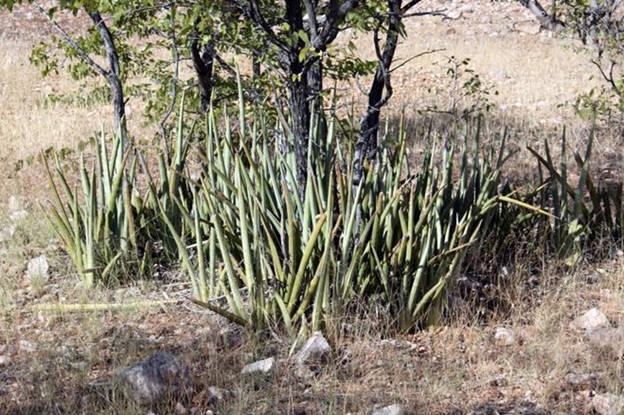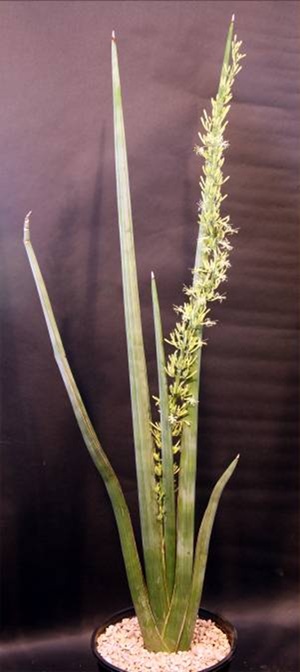| |
Sansevieria pearsonii N. E. Brown |
| Protologue: |
Bulletin of Miscellaneous Information, Kew 1911: 97 (1911). |
| Subgenus: |
Sansevieria |
| Group: |
Sansevieria cylindrica |
| Etymology: |
This species name honors Professor Henry Harold W. Pearson, an English botanist and the first director of the Kirstenbosch National Botanical Gardens near Cape Town, South Africa. |
| Distribution: |
Angola, Botswana, Namibia, Zimbabwe, and South Africa. |
| Brief Description: |
An acaulescent and rhizomatous perennial, this species forms dense stands in nature. It has 3 - 7 distichous leaves that are erect but gradually spreading towards the sharp whitish tips. The leaves are smooth, cylindrical, slightly compressed laterally, with a groove on the upper face, and they are 50-100 cm long and 3.4-3.8 cm thick. The color is either slightly glaucous-green or bluish-green with faint pale green bands and a greenish-white margin. The inflorescence is up to 100 cm tall and simple with 6 - 10 flowers per cluster. |
| Similar Species: |
Sansevieria pearsonii is the most widespread distichous, cylindrical leaf species in southern Africa. It is unlikely to be confused with other species in the genus, including Sansevieria pfisteri, its closest relative. A number of color forms are recognized in cultivation, especially a blue form that can occur in natural stands among the otherwise green forms. |
| |
| |

Sansevieria pearsonii at a site northwest of Outjo, Namibia.
|
| |

Sansevieria pearsonii flowering in cultivation.
|
|
| |
| |
|
|
| |
| |
|
|

